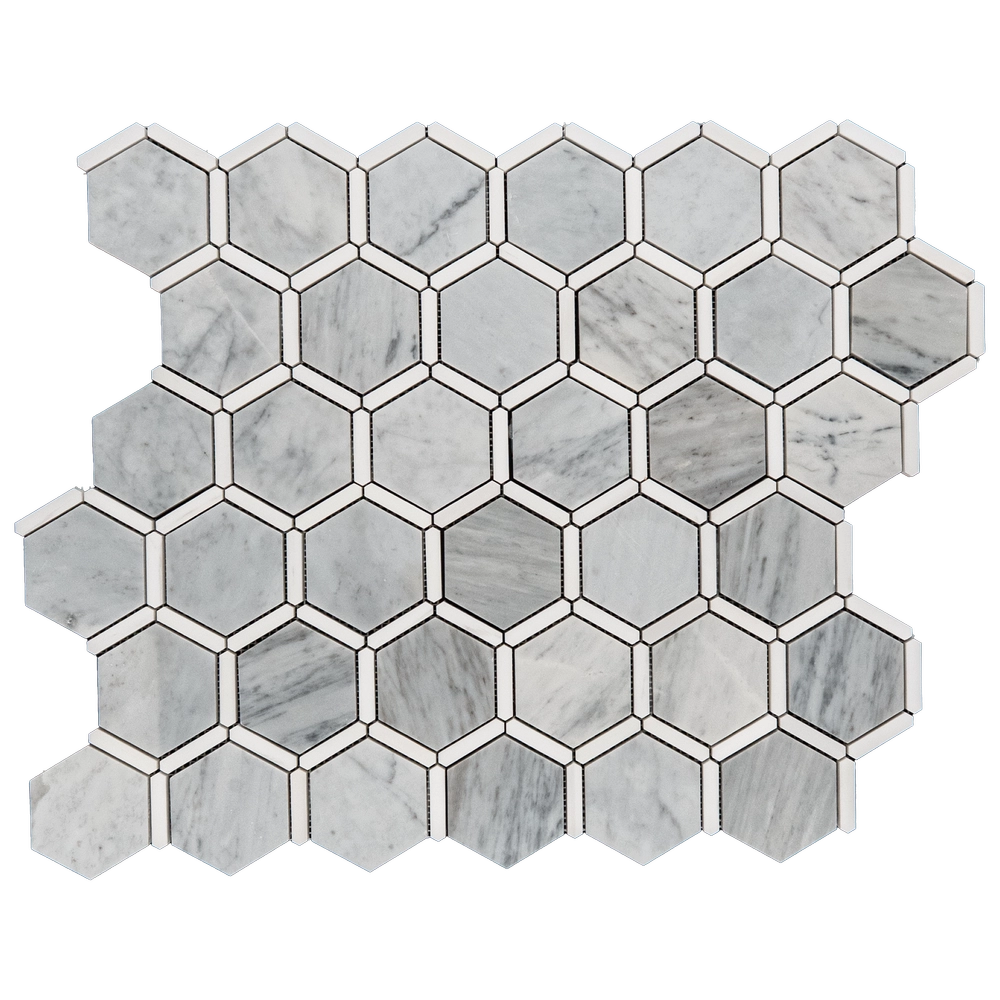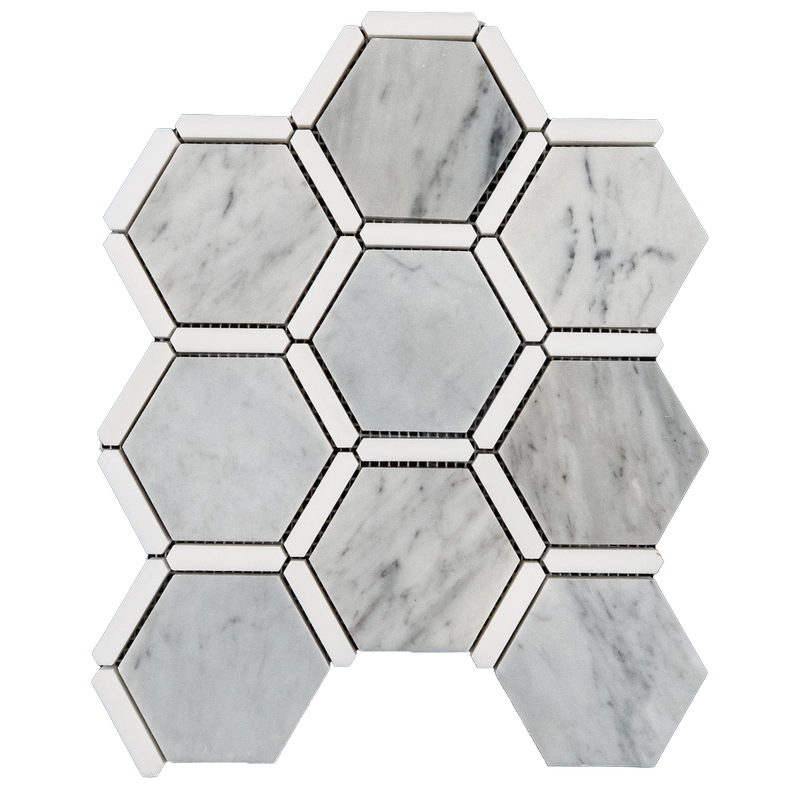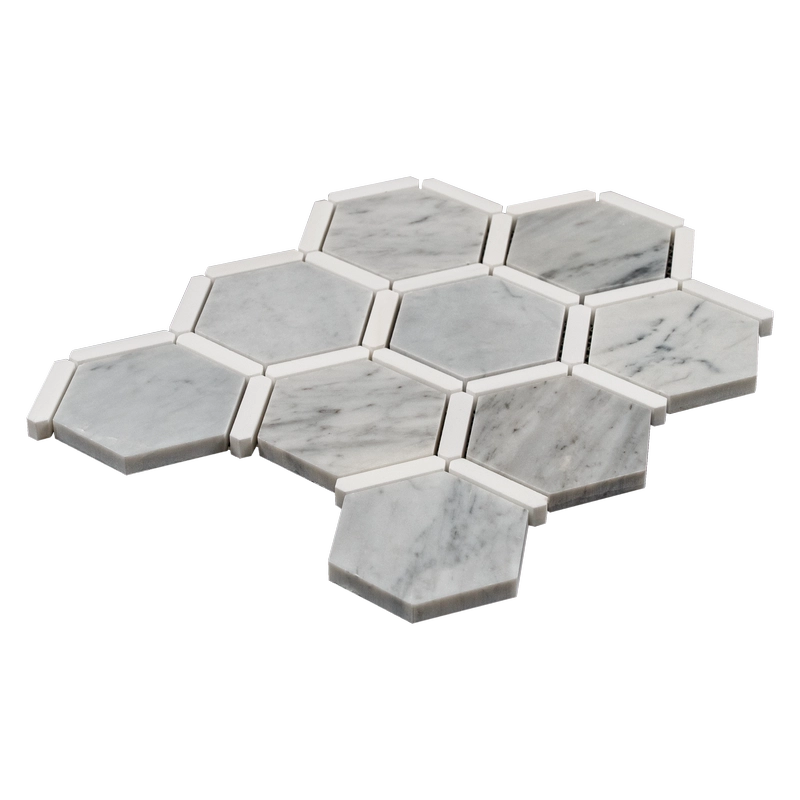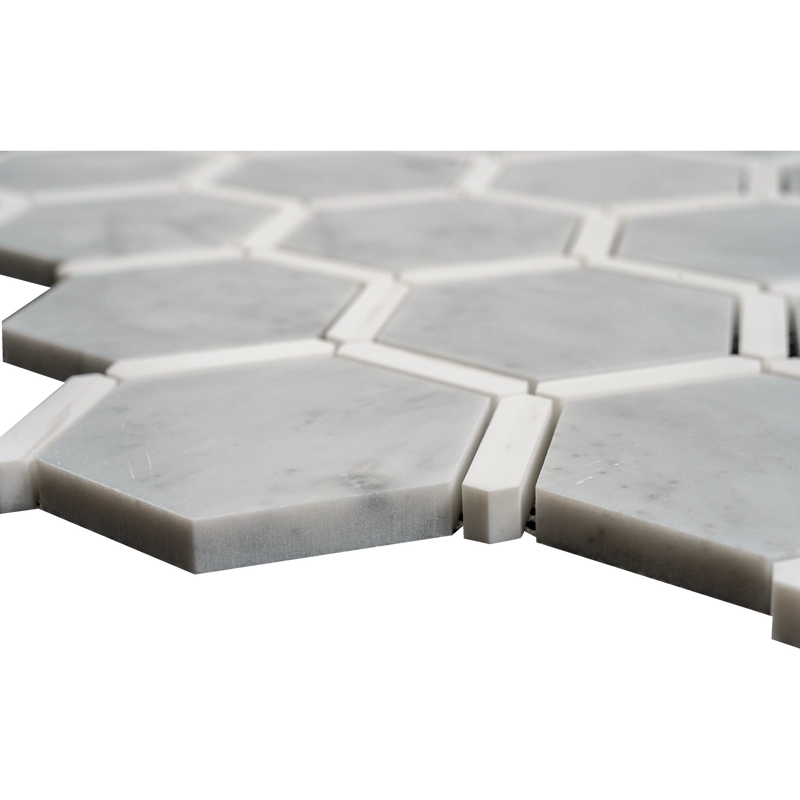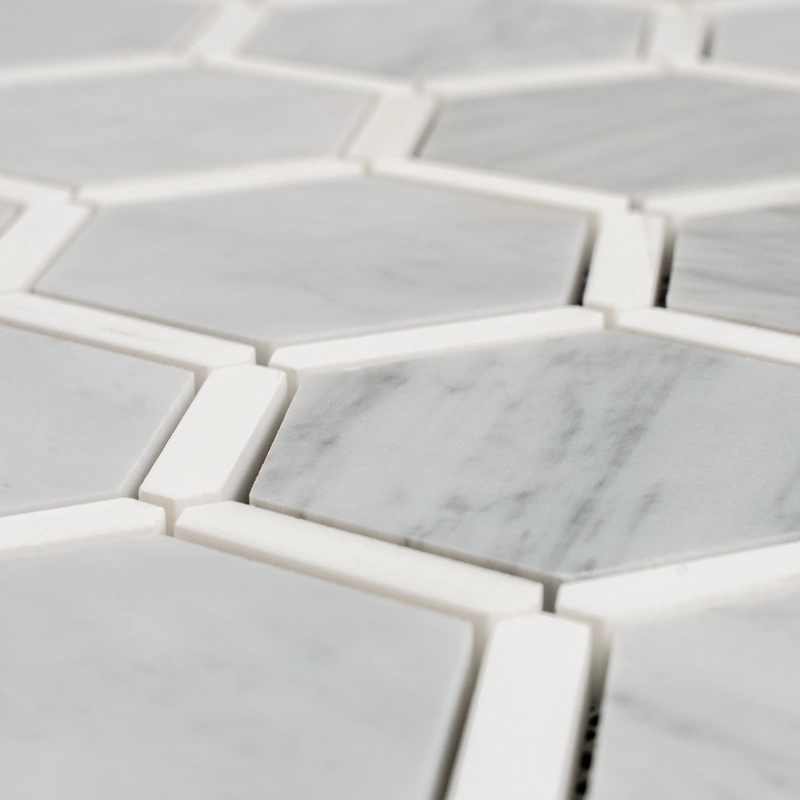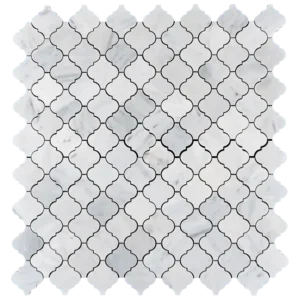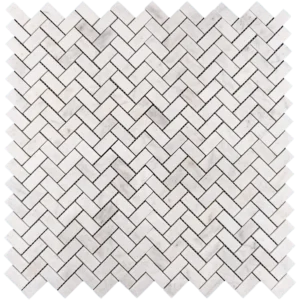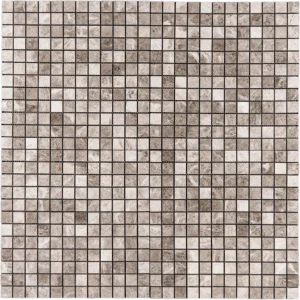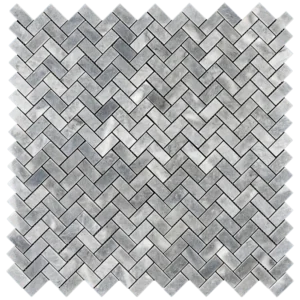Installation Guide – Carrara & Dolomite Touch Polished Marble Mosaic Tile
Material Notes
This mosaic combines two premium marbles: Carrara (soft gray-veined white) and Dolomite (crisp white), both polished for a luminous finish. Sheets are mesh-mounted (~12″×12″) with factory chip spacing; some lots may be paper-faced. Suitable for walls, backsplashes, shower surrounds, and light-traffic residential floors. Polished surfaces can be slippery when wet.
Step 1: Surface Preparation
Ensure the substrate is clean, dry, rigid, and flat (≤1/8″ in 10′). Patch or skim as needed. Approved substrates include cement backer board, properly cured concrete, or mortar beds meeting ANSI standards. For wet areas, install an ANSI A118.10 waterproofing membrane per manufacturer instructions.
Step 2: Dry Layout & Color Balancing
Dry-lay multiple sheets to evenly distribute Carrara and Dolomite tones. Snap level reference lines to maintain straight courses. Trim mesh edges and stagger seams so the mosaic grid is invisible post-installation. Plan perimeter and fixture cuts for balanced visuals.
Step 3: Adhesive (White Thin-Set) Application
Adhesive: Use white, polymer-modified thin-set (ANSI A118.4/A118.15) suitable for natural stone. Avoid premixed mastics, especially in wet areas. White mortar prevents shadowing through light-colored stones.
Trowel Technique: Apply 3/16″ V-notch (or 1/4″×3/16″) on flat substrates. Key in flat, comb in one direction, then lightly flatten ridges to prevent telegraphing. Work in sections you can cover within 10–15 minutes.
Step 4: Setting the Sheets
Align sheets to layout lines and press using a rubber grout float or beating block for full contact and a flat plane. Maintain factory chip spacing; back-butter chips as needed. Correct lippage immediately. Remove squeeze-through thin-set from joints and surfaces with a barely damp sponge or microfiber cloth. For paper-faced sheets, set paper out, beat in, lightly wet after initial grab (≈10–20 min), then remove paper and true joints.
Step 5: Cutting & Detailing
Use a wet saw with a continuous-rim diamond blade; tape cut lines to minimize chip-out. For small trims, use mosaic nippers sparingly and finish with a rubbing stone. Exposed edges can be finished with stone trim, metal profiles, or matching moldings.
Step 6: Grouting (Polished Marble)
Allow thin-set to cure (≈24 hours). Use unsanded grout for joints ≤1/8″. Light neutral, ivory, or soft gray grout harmonizes with both stones; always test first. Optionally, apply a marble-safe grout release or pre-seal to prevent pigment uptake. Pack joints diagonally with a rubber float and clean minimally to prevent washout or shading.
Step 7: Sealing
Once grout cures (≈72 hours), apply a penetrating, breathable sealer approved for marble. Re-seal every 1–2 years in wet or high-use areas.
Maintenance
Clean with pH-neutral, non-abrasive stone cleaners. Avoid acids, bleach, vinegar, or abrasive pads. Squeegee or wipe dry in showers to minimize mineral deposits; use marble-safe scale removers if necessary.
Movement Joints
Honor structural expansion joints and provide soft joints per TCNA EJ171 at perimeters, plane changes, and transitions. Use 100% stone-safe silicone at corners and where tile meets dissimilar materials.
Important Notes & Disclaimer
Natural stone varies in tone and veining; blend sheets before installation. Expect minor size and thickness variations common to mosaics. Protect polished surfaces during handling and cleanup. Stonemarket USA is not responsible for improper installation or substrate issues. Professional installation is recommended.


